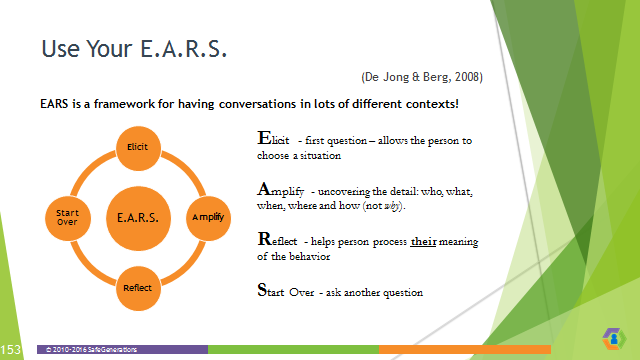(Effective 04/02/19)
Table of Contents
12.1 Preparing for Termination of Services
12.2 Building Support Systems through Safety Networks
12.3 Family Reactions to Case Closure
Case Closure
The decision to terminate services is based on a thorough evaluation of the family situation. Ideally, ending Children’s Division involvement happens when sufficient change has occurred through the delivery of change strategies and interventions. Families involved with Children’s Division may have experienced past endings that have been challenging, or even traumatic both in their life histories as well as their experience with community agencies. Therefore, it is important to help minimize the tradeoffs of case closure. This not only helps families sustain important changes they have made during Children’s Division involvement but also recognizes their success.
12.1 Preparing for Termination of Services
Staff should prepare families for a formal closing process. Skills in terminating the helping relationship are just as important as skills that are used in initiating and establishing the relationship. Termination of services should be a planned and natural component of the casework process. Discussion of case closure should begin during the assessment phase and continue to case closure. A final updated version of the Family Safety Planning Document (CD-267) and the Family Risk Assessment Map (CD-220) should be completed and reviewed with the family at case closure.
12.2 Building Support Systems through Safety Networks
Community collaboration is an important part of the closing process. Some families need ongoing intervention and/or support from community agencies even after case closure. Stabilization of the changes which have been made by the family is important. Staff must work with families to identify any factors that might counteract the changes made in the helping relationship and take steps to prevent this from happening. Helping the family locate and utilize outside support systems and resources throughout the treatment process is a good way of facilitating family empowerment. Such measures will assist the family beyond the time when the Division closes the case.
12.3 Family Reactions to Case Closure
Saying goodbye may be the most challenging dimension to the closing process. Family members may experience a wide variety of feelings that can include, but are not limited to: sadness and loss, anger, betrayal, powerlessness, fear, rejection, ambivalence, or relief. Whether their participation was involuntary or voluntary, staff should not assume that families will be pleased for Children’s Division involvement to end, particularly if the process opened the door for them to make substantial, positive changes. Acknowledging that all feelings about case closure are valid will help support families through the process.
A month or so before the anticipated closure is a good time to use questions to explore the family’s feelings about the case closing and engage them in planning for how they want the case closing to go. For example, the family may want a closing event/celebration or something else that fits well for them.
Signs of Safety utilizes the Appreciative Inquiry (AI) technique as a tool for enabling family experience and staffs practice wisdom to inform the ongoing growth and development of practice. Appreciative Inquiry (AI) assumes that there is something good, positive, or successful that has occurred when working with a family even in the midst of difficult or tragic circumstances. The process involves the search for specific details regarding what happened to lead to the positive outcome and the role of the person involved. A formal appreciative inquiry interview is a time set aside to examine the details and positive impact of a good piece of work.
The purpose of AI is to:
- Learn from what worked;
- Encourage reflective practice to build practice depth by exploring what happened, what behaviors took place and what strategies were involved, in an effort to do more of the same and build on this for the future;
- Share good practice within a team to promote a culture of learning and appreciation, team cohesion and constantly improving practice; and
- Build hope, energy and confidence for working on the difficult things.
AI can occur anywhere – in supervision, in team meetings or during a set aside time. AI involves an interviewee and facilitator and is enhanced by the participation of others as observers.
Using the EARS prompts during AI assists in developing a questioning approach to reflect on and describe details of what they have done well, how they came to do it, and what challenges they have overcome. The EARS questioning framework is used to guide the interviewee through a thorough analysis and reflection on their good work

